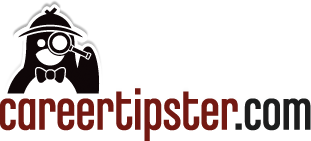If you’re on the job market this year, you have your work cut out for you. The economy is strong, and unemployment is low, but hiring managers are largely filling positions with candidates who are already working in their organizations. However, that doesn’t mean you can’t stand out from the pool of applicants to any job you might have your eyes on.
Your resume is your chance to showcase your skills and show hiring managers how you, specifically, are the best candidate for the organization to which you’re applying. But resume writing isn’t what it used to be. If you’re applying for jobs in 2018, you need to know to format and write a resume that will get you called in for interviews.
Let Your Personality Shine Through
Job hunting is an arduous task in which it’s hard to be authentic. Like most job hunters, you’re probably afraid that being yourself and being a quality job candidate might not be quite the same thing. But what sets you apart from the others is you — your unique experiences, accomplishments, skills, strengths and personality traits. Hiring managers aren’t looking to hire robots; they want to hire human beings, and they know what kind of person they’re looking for: someone who meets the job qualifications, sure but also someone who thrives under pressure, works hard, is passionate about what they do and is fun to have around the office.
Add a human element to your resume by using your professional summary as a way to describe why you do what you do and why you’re passionate about your career. Use your professional summary as a way to describe how you got into your career, what your professional goals are and what you’d like to accomplish in the position to which you’re applying. Get specific. Don’t just say you want to make the organization a better place to work. Say that you want to recruit talented people, support their professional development and build a healthy company culture that nurtures everyone’s professional goals.
Quantify Your Unique Value
If you want your resume to get you called in for an interview, it needs to showcase why you’re a better candidate than anyone else — or at least, why you’re different in a way that will benefit the organization. Think about what makes you unique as a job candidate. Maybe you have an unconventional background, exceptional soft skills or the ability to motivate team members.
Once you’ve decided what your unique value is, you need to quantify it in your bullet-point descriptions, even if you don’t normally work in sales or other numbers-driven positions. Numbers help hiring managers understand your accomplishments and make those accomplishments look more impressive. Compare the two bullet-point descriptions below:
- Evaluated blog posts and web articles before passing them to senior editors or returning them to authors for revision; or
- Evaluated 40 to 50 web articles daily before passing them to senior editors or returning them to authors for revision.
The first point makes it sound like maybe you only evaluated articles once in a while or like you only did a few a week. The second point gives a much clearer picture of the place this task occupied in your daily work load and of how much experience you have doing it. If you’re having trouble quantifying your accomplishments, don’t despair. A professional resume writer can help you describe your accomplishments in ways that are meaningful to hiring managers, and many offer a free resume review to start.
Use an Eye-Catching Format
You want to format your resume in such a way that it’s eye-catching and easy to read, but not overdone. Take it easy on the all-caps, bold font and italics; use them, but do so sparingly. Make sure the best parts of your resume are at the top. Consider leaving out your mailing address; include your LinkedIn profile instead, but make sure you have a solid LinkedIn profile that matches your resume and includes endorsements, recommendations, awards and other accomplishments.
Perhaps the most important thing you can do when formatting your resume in 2018 is to make sure that you’re using the same keywords that Applicant Tracking System (ATS) bots use to parse submitted resumes. Paste the job description into a free word cloud tool, such as Wordle, to find out which words are used most frequently in the description. Include those words in your resume.
With the right resume, finding a new job is so much easier. The right resume can get your foot in the door — and that’s half the battle.






